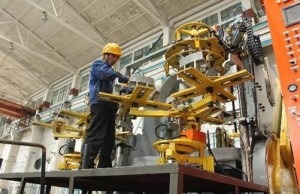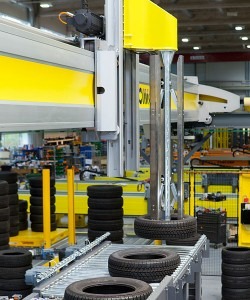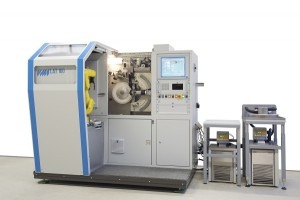Commentators on the Chinese tire market remain surprisingly upbeat, in view of the negative developments of the past year.
Confidence in the Chinese tire market remains unshaken by the negative developments of the past year, including swingeing tariffs on exports to the US and the steep hike in costs threatened by the Beijing government’s introduction of a new standard for compound rubber.
However, the squeeze on exports to the US and other countries combined with loss of competitiveness, particularly at the lower end of the market could lead to bankruptcies.
Smaller, less modernised players are said to be most in the firing line – though the fate of Deruibo (see report S10) suggests that larger companies are not immune from the impact of increasing overcapacity in the Chinese tire industry.
The US anti-dumping tariffs affecting $3.3 billion (E3 billion) worth of products and the anti-dumping investigation on Chinese tires by the Customs Union of Belarus, Kazakhstan, and Russia is casting a long shadow on China’s tire-making sector – delegates to the 2015 China Rubber Conference in Guangzhou were told (see also report S4).
China’s tire makers’ operating rate is plummeting. In February the China Rubber Industry Association (CRIA) tire subcommittee’s member companies had a 5-percent year-on-year decrease in radial tire output.
With those factors taken into account, Shen still considers China’s new standard for compound rubber imports an even bigger threat.
According to the rubber sector veteran, the new standard is intended to raise domestic natural rubber prices. However, last year China’s natural rubber output was 850,000 tonnes, or 17 percent of its total natural rubber (including compound rubber) consumption.
The new standard redefines the tariff-free compound rubber with a maximum of 88 percent crude rubber in its composition as opposed to the 95-99.5-percent current standard.
This is basically forcing Chinese companies to import natural rubber with a 1,500 yuan (E225) per tonne tariff, or to switch to synthetic rubber if possible.
“In 2014, China imported 1.6 million tonnes of compound rubber, and this [under the new standard] would mean a 2.4 billion yuan cost increase for China’s rubber sector companies,” Shen said at the CRIA conference on 7 – 10 April.
Despite these, seemingly, unhelpful developments, the outlook for the Chinese tire market is far from gloomy, according to feedback, in June, from a range of Western players with their finger on the pulse of the Chinese tire market.
“The market is reviving and our group has an unusual number of inquiries, particularly for weighing and dosing lines for rubber small chemicals, said Jacob Peled of Pelmar Engineering, an Israel-based supplier of equipment, technology and services to the tire sector. (see also Viewpoint S15).
“We also know that VMI has quite a few new orders for tire building machines. I believe also Comerio Ercole has some new orders,” the Pelmar Engineering boss added.
“The same trend seems set to continue for the next 24 months,” said Tuomisaari. “The Chinese tire manufacturers have just started investing in material handling automation. There is a huge interest now when they have ‘woken up’.”
Adding a note of caution, though, Tuomisaari said that the production philosophy of Chinese tire manufacturers is “quite conservative” and they have not been ready to accept new ideas for their production.
Production philosophy
“If you apply automation to the old production philosophy, the result is not very good,” he said. “It is not possible to develop competitive solutions. You’ll lose some of the efficiency. If you can accept new thinking and look at the tire plant from a new point of view, it is possible to streamline the process with help of automation and achieve a huge profitability increase.”
At the same times, however, Chinese tire makers have become more ready to invest, particularly as many of them want to export tires, Tuomisaari continued.
“On the export market, tire quality and traceability are important factors in addition to the price,” he said. “Through automation, all these can be achieved. The tire quality is improved, the traceability is achieved and the production will be less expensive.”
All major Chinese players in the market are now studying automation, continued the Cimcorp executive, noting particular interest in technology to control of the material flow with robots, conveyors, and intelligent software – can increase their productivity.
“Foreign tire manufacturers in China were the pioneers and invested in automation, but now the Chinese companies have started to do so too,” Tuomisaari concluded.
For his part, Mike Norman, VMI’s director of sales in Asia, noted a softening of the market for passenger tires because of uncertainties caused by the anti-dumping measures in the US. In recent months, however, he said that the more quality-conscious manufacturers are recovering, and the “prognosis is good”.
“There is an increasing demand for professional services, such as preventive maintenance programmes, in response to the demands of the OE market, which is a target for the more progressive Chinese tire companies,” Norman noted.
The VMI director linked the drive to higher levels of quality to plans for export growth, together with closer relationships with OE manufacturers.
Looking at market trends, Norman predicted “limited growth over the next 12 months, then more steady growth, rather than the boom of the last 18 months.
“Prospects for companies that aim to build strong brands and a good reputation for quality remain generally more positive than for the rest.”
There are, however, further challenges ahead, Norman noting overcapacity in the Chinese market, while credit had tightened, making it less easy to invest.
As a result of these changes, he said, VMI expects a stronger focus on premium and export-focused products, leading to a more “normal” pattern of trading, with steady rather than rapid growth.
“In the past rapid growth has been driven by a form of opportunism, based on the belief that a very large global market exists for low-cost tires,” Norman explained. “Today we see a distinct shift of focus away from bottom-of-the-range products and towards higher quality products, based on the drive to build strong Chinese brands and a premium quality, premium cost industry position. This is a steady process of change that we welcome.”
Norman concluded by predicting restructuring and consolidation for the Chinese tire sector, with the top 10 companies becoming stronger and more quality conscious, as well as an increasing drive to invest outside of China.
“We can see a strong and growing trend to invest overseas, and this is already happening in the US and in the Asia Pacific region more widely,” he said. “This is part of the general move by progressive Chinese companies to emphasise quality, target demanding, developed markets, work with global OE manufacturers and generally move upmarket.”








